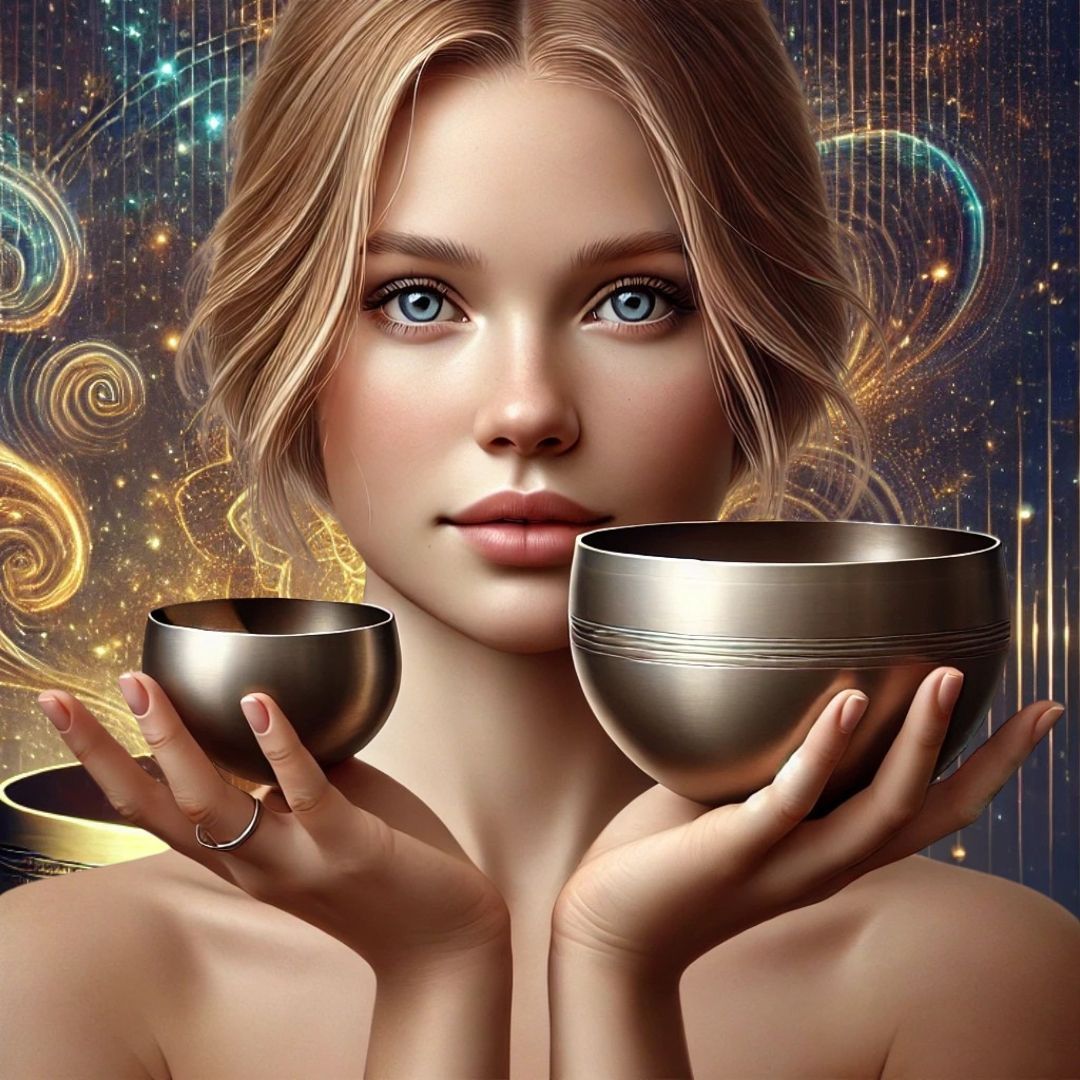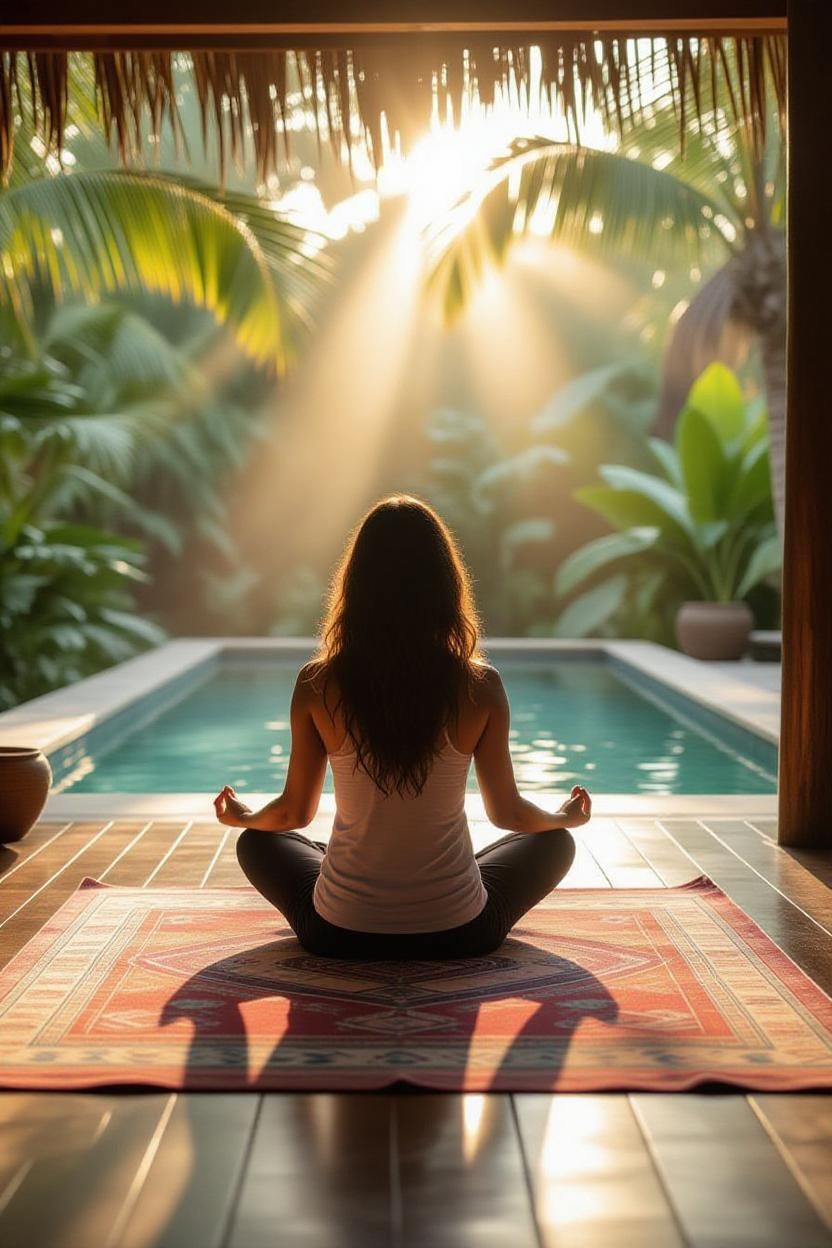How to Meditate with a Singing Bowl
Sound as anchor, rhythm as guide

Singing bowls, traditionally made from a seven-metal alloy, are instruments of both resonance & silence. When activated, the sound does not simply emit — it rotates within the bowl, creating an internal spiral. This rotating vibration expands outward in a soft wave that envelops the body & space around it. The result is not just audible — it is deeply physical.
This physicality can be explained through the principle of mechanotransduction: the process by which cells convert mechanical stimuli into biochemical activity. In this case, vibrations from the bowl subtly stimulate tissues, influencing both the nervous system and internal rhythms. The sound becomes something to feel as much as to hear.

The Role of Meditation
Meditation is often associated with stillness, but it is, more precisely, a return to internal perception, to breath, to the quiet motion of bodily fluids and subtle pulses. It does not aim to stop thought, but to soften the attachment to it. A kind of recalibration.
When sound is integrated into meditation, particularly through practices such as Nada Yoga (the union of sound), it offers a pathway inward. Not through effort, but through listening — not only to external tones but to the body’s own rhythms. Heartbeat, breath, vibration. All interconnected through sensation.

Sound as Anchor
A singing bowl provides a stable point of focus. In meditation, attention naturally drifts. This is not failure, but function — and sound offers a gentle return. Each time the mind wanders, the bowl’s tone becomes a reminder. Not through command, but through presence.
The vibration acts as an anchor and a guide, offering structure without rigidity. Unlike verbal instructions, it bypasses the analytical mind and resonates directly with deeper layers of perception. It becomes an entry point into stillness, not by silencing the world, but by aligning with it.

A Simple Practice
Meditating with a singing bowl begins with simplicity. No specific posture or experience is required — only a space to listen, and a willingness to return to the present moment.
The following steps offer a gentle way to begin:
1. Start by listening
Before introducing the bowl, attention is brought to the natural sounds of the room — the quiet hum of the surroundings, distant noises, subtle shifts in the environment. The breath itself becomes part of this landscape. Observing these sounds without judgment helps settle the nervous system and tune the ear to presence.
2. Introduce the bowl
The bowl is played softly — either by striking or by circling the rim with a mallet. The sound is allowed to unfold naturally. The focus remains on the sound, while the body stays relaxed, especially around the face and jaw. The resonance of the bowl becomes the center of attention, gently inviting stillness.
3. Stay with the sound
As the tone continues, the practice consists of remaining with it — not holding onto the sound, but simply being alongside it, allowing it to fade, return, and move in its own rhythm. Each time the sound plays, it creates a window of still presence. Meditation is practiced during this time, in quiet observation.
4. Anchor with intention
The singing bowl can also serve as a vessel for positive affirmations. By associating the sound with a simple phrase — such as “I feel free and confident” — the mind begins to internalize the message more deeply. Over time, this association helps reorient thought patterns and reinforce supportive beliefs. The vibration becomes not just sound, but signal.
5. Explore internal rhythms. (optional for advanced practice)
With time, attention can be directed toward the body’s inner pulses — most notably the heartbeat, felt in accessible points like the wrists or chest. Focusing on this internal rhythm, and gently aligning the mind with it, opens a deeper meditative state. Singing bowls naturally support this process, as their tones help synchronize brainwave activity and encourage coherence in subtle bodily systems.

Affirmations & Mantras to Use with the Bowl
Sound has the power to carry intention. When paired with a clear phrase or mantra, the vibration of the bowl helps reinforce inner direction and alignment. Whether spoken silently or aloud, these phrases can be repeated as the bowl sings, allowing the body and mind to absorb their meaning through resonance.
< Positive affirmations >
These phrases are simple, grounded, and beneficial for regular practice:
– I feel calm and grounded
– I am safe in the present moment.
– I trust the rhythm of my life
– I feel free and confident
– My mind is clear, my heart is open
– I release what no longer serves me.
– Peace begins within me
< Traditional mantras >
These mantras are often used in sound-based meditation practices rooted in Tantric or Himalayan traditions. They may be chanted once or repeated in cycles of 3, 7, or 108:
– Om Mani Padme Hum – A mantra of compassion and spiritual awakening
– Om Shanti Shanti Shanti – A mantra for peace, repeated three times to invoke peace in body, mind, and soul
– Aum Hrim Shrim Klim – A seed-syllable mantra often associated with feminine energy and manifestation
– Om Namah Shivaya – A mantra for transformation and inner clarity
– Hum Phat – A cutting mantra used to release and protect, often in Tibetan practice
– Om Aim Hrim Klim Chamundaye Viche – A tantric invocation to remove obstacles and restore inner power
Each sound, each word, becomes more than language.
It becomes presence, intention, and vibration — carried gently by the bowl.
Thank you for taking the time to read, xx.












